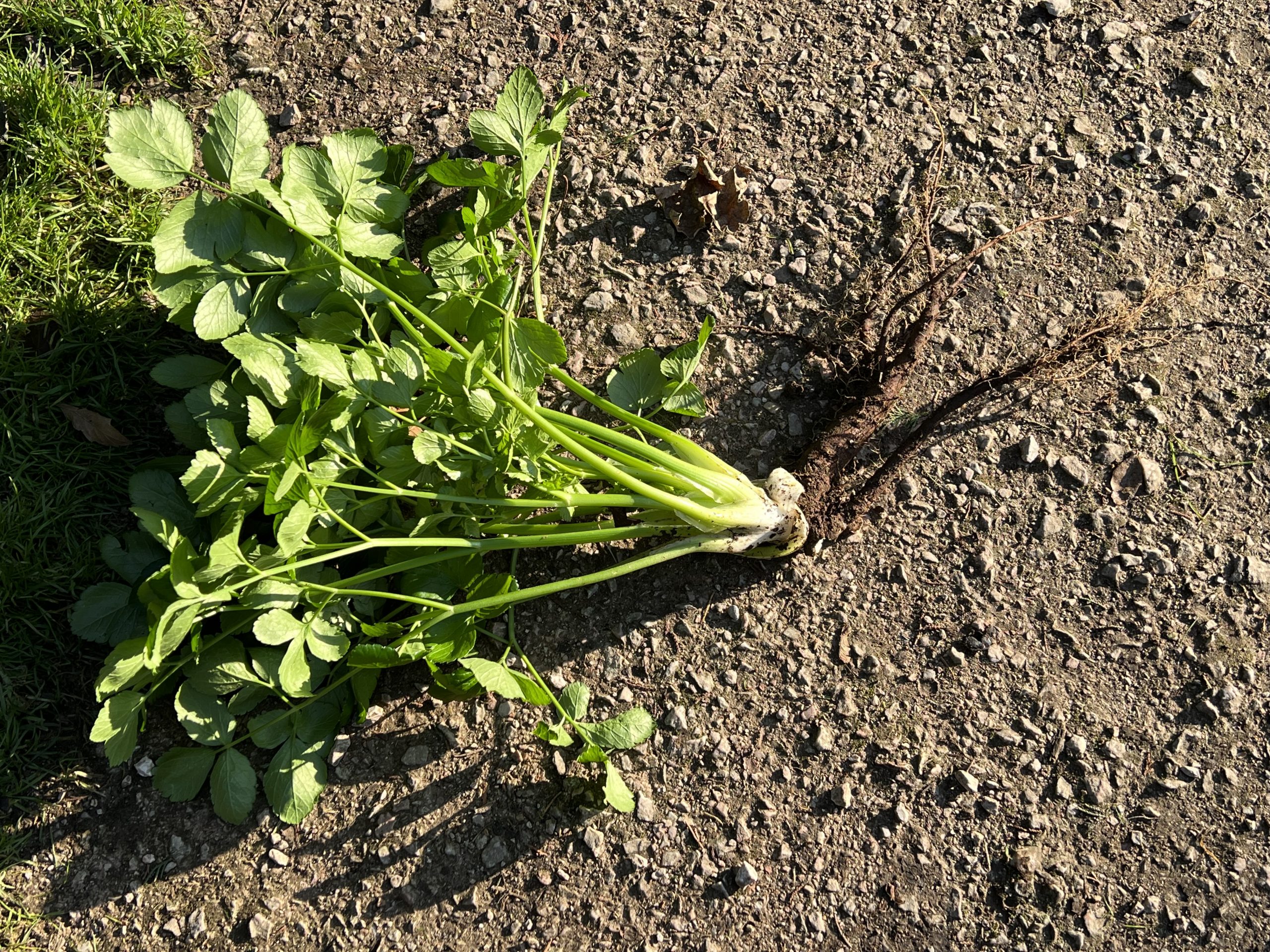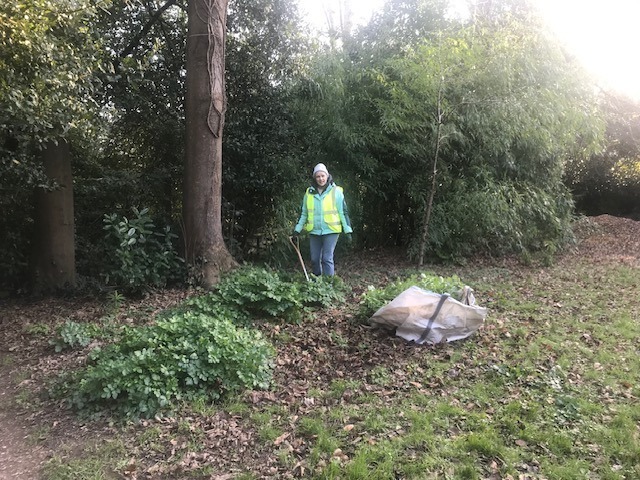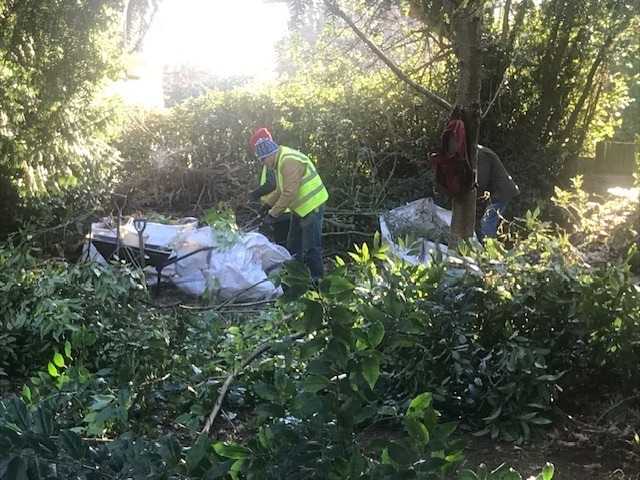Alexanders make an excellent addition to the plate, as a foraging website notes:
Thomas Tusser’s One Hundred Points of Good Husbandry, published in 1557, gave recommendations for “herbes and rootes for sallets and sauce”, suggesting the use of “Alexanders, at all times”. It is also recorded from the 17th century as an ingredient in the staple peasant dish, pottage…
Alexanders is the earliest of the umbellifers to emerge, and its tender young shoots, which taste like a cross between celery and parsley, can be foraged as early as late January.
Alexanders: the forgotten vegetable
And so the volunteers of the FOGG working party were busy down at the Glen foraging for Alexanders. But, to be more precise, as recounted by FOGG member Phil Lee, they were being ‘harvested’ for other reasons:
It was a delight in Glen Goyle this morning, and five of us enjoyed a fresh, dry, sunny couple of hours working away. A few photos are attached.
We celebrated ‘Sidmouth Alexanders Day’, a plant with a fascinating past (see the article above supplied by John Hoskins) then we dug them up and threw them away. They really are very virulent and invasive, and need to be kept under control.
With some accompanying photos to show the work underway, also by Phil:
…
Fellow FOGG member Katie Frost added:
Here is an intact Alexander in all its glory. Look at that root! I broke my fork (a prong just snapped off) digging these up this morning.
With the evidence supplied by Katie:

…
As Ed Dolphin asked last autumn:
‘Are Alexanders classed as a friend or a foe?’ | Sidmouth Herald
…


